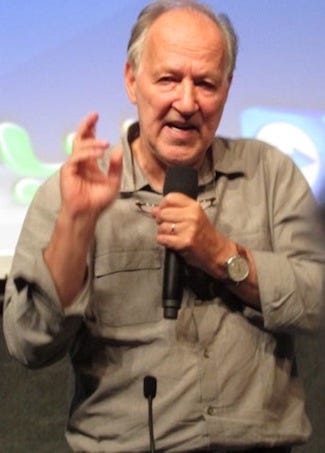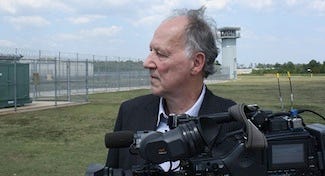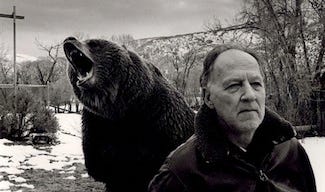Click to tweet this article to your friends and followers!
‘Ballet 422′ and Cinema Truth
The truth about documentary is this — there are many categories and styles — from investigative to personality-driven, to topics that expose cover-ups and catastrophes, to — well, yes – the list goes on and your imagination is the limit.
Many film theoreticians and documentarians differ on their interpretations over what elements should or should not be included when categorizing the various styles of documentary films, but what they do agree upon is this — there are no strict rules one must adhere to when making documentaries. And so, one can say there is often an exception to every “rule” when labeling and categorizing the various styles of documentaries.
So, if one truth is that there are no hard and fast rules in making documentaries, how does the writer know how to write a documentary?
In writing and/or sketching out the ideas for a documentary you can present ideas objectively, subjectively, or let the subject and/or subject matter speak for themselves/itself. You can follow the traditional 3-act structure or a non-traditional narrative format, or use talking heads, stock footage, dramatic reenactments, voiceover narration, still photographs, live action, animation, put yourself in the story or just allow images and your subjects to convey the story. You can use some or all of these choices, or create something else. The choice is up to you.
Choosing Cinema Vérité: Ballet 422 and Cinema Truth
Director Jody Lee Lipes describes his new documentary Ballet 422 as Cinema Vérité. Translated from the French, this term defined as “cinema truth,” is also referred to as Fly on the Wall or Direct Cinema. The “truth” is underscored in this definition; the filmmaker captures what is happening in front of the camera without artifice.
Some of the elements that are seen in Cinema Vérité include the use of handheld cameras, natural lighting, direct sound, and location filming — while elements not generally seen are the utilization of voice-over narrations, talking heads and extensive background information. Examples of this filmmaking category are the 1973 PBS series An American Family, which followed the daily lives of the Loud family for seven months and Grey Gardens (1975) directed by Albert and David Maysles, Ellen Hovde and Muffie Meyer, about a mother and daughter reclusive socialites, living in a decrepit Long Island mansion.
From first rehearsal to world premiere, Ballet 422 goes behind the scenes at the New York City Ballet, as it follows Justin Peck, 25, a dancer with the NYCB and up-and-coming choreographer, as he creates his new work “Paz de la Jolla” from its first rehearsal to world premiere. This commissioned ballet is NYCB’s 422nd new ballet — hence the film’s title.
Justin Peck is the main character and the film takes the viewer on his journey, offering glimpses into the ballet world and Peck’s work process as he collaborates with fellow dancers, orchestra musicians, lighting and costume designers.
In Ballet 422, there are no re-enactments, voiceovers, or talking heads — there are only a few lines of superimposed text that offer only brief background information about choreographer Peck, who shows minimal emotion throughout the film. Peck is focused, confident, and demonstrates only glimpses of nervousness as the premiere date approaches.
A vital element of cinema vérité is spontaneity. The director is the observer, witnessing the action without interfering in it or controlling it. Portable equipment (handheld cameras, and so on) allows the cameraperson and sound recorder to go to the subjects rather than the subjects going to them. Another cinema vérité element seen in Ballet 422 are several quick moments where there was a boom mic in the shot, or a mirror reflection of a camera person filming the dancers.
Director Jody Lee Lipes and Producer Anna Rose Holmer at the Emelin Theatre in Mamaroneck, New York discuss the Writing Process and Influences
Producer Anna Rose Holmer: “The film’s influence is Studs Terkel’s Working: People Talk About What They Do All Day and How They Feel About What They Do. When you focus on people, you learn a lot about what makes them tick. The drama is there. There were no tantrums. The quiet storm was happening.
Director Jody Lee Lipes: “Letting people in the film dictate it is better than what you can write. We sketched out ideas of the story arc. The biggest change was in the end when we learned that Justin was dancing in another piece the same night of his premiere. The writing process happened in the editing room. One of the storytelling devices the editor and I used to make it feel move forward was to build on each rehearsal — we see Justin alone, Justin with one dancer, then the whole corps, and then the entire cast. The first time we see Albert (ballet master) and Justin walking on stage, because of that progression of scenes, we know we’re getting closer to the premiere of the ballet.”
There is not the expected or anticipated drama or melodrama of a behind-the-scenes glimpse into the New York ballet world.
Lipes: “Justin, the subject, doesn’t change with the camera on him. That is the real Justin. This is why I made the movie; I love watching someone really focused on what they’re doing.”
Your Next Steps
Watch documentaries that share your aesthetic, ideas, and sensibility, and then note down what makes your project different. As you develop and sketch out your ideas think about who your main characters are, their goals, desires, and agendas, and what your significant message is.
You can leave everything to chance or adhere strictly to your script. The choices are up to you. Your mantra to keep in mind when writing and sketching out your ideas for a documentary? Truth is stranger than fiction.
– See more at: READ MORE HERE


















